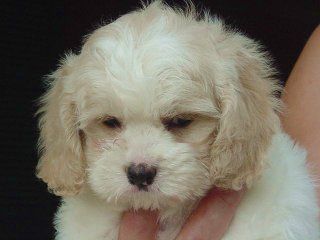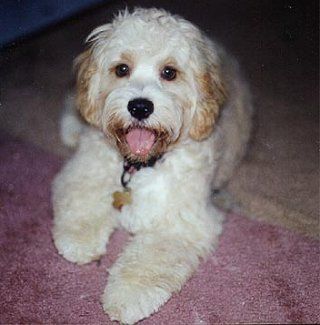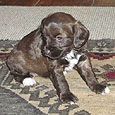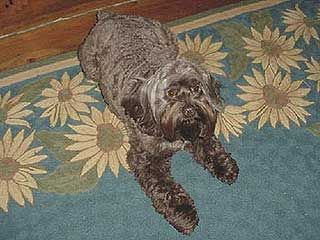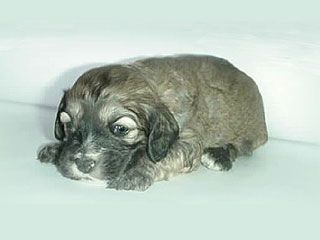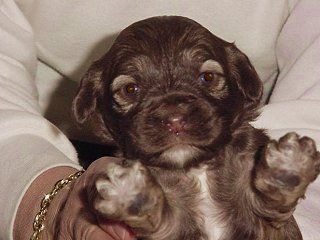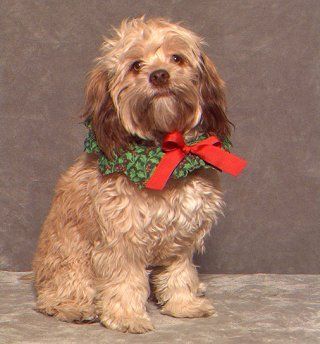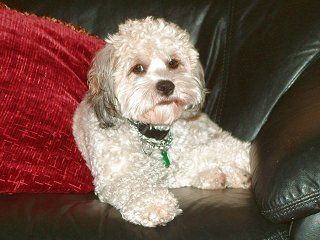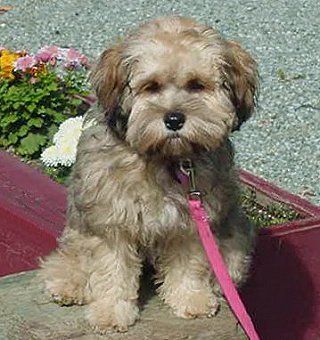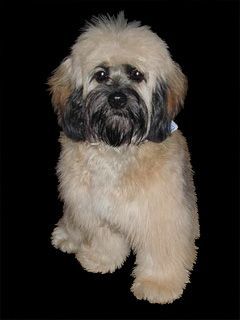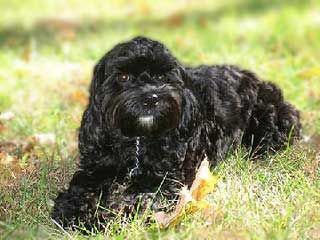TABLE OF CONTENTS for PHOTOS
» "CLICK" THE BREED-NAME FOR COLORS YOU'RE INTERESTED IN «
COCKAPOOS
Cockapoos can be found in a variety of basic colors, as well as shades, blends, and mixes of these basic colors. There are so many variations that we decided to put together a list of colors, descriptions of these colors, and photos of individuals displaying some of the colors described below. We hope that the color descriptions plus the pictures (shown below this list of descriptions) will help those who are searching for a particular color or those who have seen a particular color but were unable to put a name to it:
Black—solid black or black with small amounts of white markings on the face, chest, tummy, and/or paws.
Black/Tan—referred to as "Phantom" in describing Cockapoos and Poodles—is characterized by markings similar to a Rottweiler or Doberman. The markings, usually on the legs, eyebrows, beard/mustache, inside of ears, and under the tail, can be dark brown, rust, cream, or silver.
White—seen mainly in 2nd and further generations of Cockapoos, as white is a recessive color gene. True AKC Cocker Spaniels should not possess the gene for white hair.
Buff—the most popular and most common color seen in Cocker Spaniels and Cockapoos. Buffs, like blondes, can vary in shade from the palest cream to a deep strawberry-blonde. This color is sometimes referred to as "tan," but dog people do not use this term.
Apricot or Red—these names refer to the same color. Poodles are referred to as apricots, whereas cocker spaniels are referred to as reds. Apricot Cockapoos range in shade from a deep strawberry-blonde to a deep, rich red similar to Irish Setter red. The point where Buff differentiates from Apricot is "in the eye of the beholder."
Sable - Sable is a dilute of the chocolate or black gene. If the base (newborn) color is chocolate, the dog's second (adult) coat will come in gold or mixed silver/gold with brown tipping on the ears, beard/mustache, and sometimes tip of tail and feet. If the base coat color is black, the second coat will grow in silver (pale silver to deep charcoal gray). Tipping will be black. Sometimes there will be a black stripe down along the spine, similar to that of a dun horse.
Chocolate—as the name implies. Chocolates can range from light milk chocolate to deep, bittersweet chocolate in color.
Silver Beige—A chocolate that has silver-white hairs throughout the brown base (roaning). Ears, face, legs, and tail usually remain dark brown or mahogany. Silver beige is seen more often in Poodles, but breeding silver Poodles to Cocker Spaniels with chocolate factoring will produce silver beige.
Parti Colors—Any coat color with a foundation of white and spots or patches of another color. There are Black/White parti, Buff/White parti, Red/White, Chocolate/White, Sable/White, and probably others.
Tri-Colors—Any coat with a foundation of white, spots/patches of another color, and trim in a 3rd color. Two examples are Black/White/Tan and Chocolate/White/Tan.



